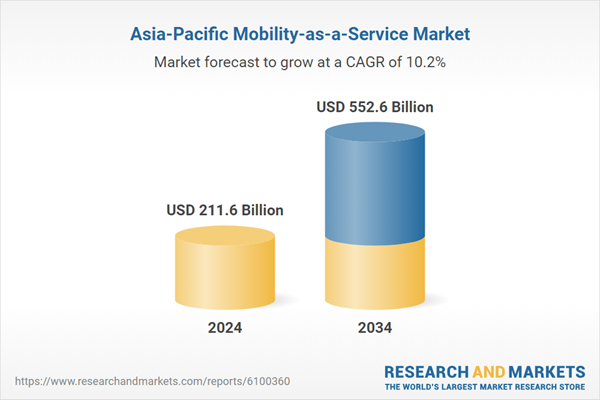These platforms are designed to reduce emissions, ease traffic, and offer commuters a more seamless and connected travel experience. By merging various mobility services into a single, app-based interface, MaaS is reshaping how individuals plan, book, and pay for transportation. The evolution of MaaS is not only transforming transportation infrastructure but also changing commuter expectations by offering smarter, cleaner, and more convenient mobility solutions.
Asia-Pacific Mobility-as-a-Service platforms are rapidly adopting sophisticated features such as AI-powered demand forecasting, dynamic routing, real-time journey updates, and centralized digital payment systems. These innovations enable end-to-end mobility across public and private modes with a single application. Companies are leveraging advanced technologies like 5G, cloud infrastructure, and IoT to enhance the personalization, speed, and efficiency of travel services. Strategic partnerships between private firms and public institutions are accelerating development, supported by government-backed sustainability initiatives. Digital mobility wallets, AI-based traffic modeling, and blockchain-integrated fare systems are reshaping operational standards while improving performance.
The pay-per-use segment was valued at USD 73.2 billion in 2024. Its appeal lies in its flexible and cost-effective nature, which caters to commuters seeking affordability and convenience without long-term commitments. This model allows users to pay only for individual rides or services, making it popular among both frequent and occasional riders. It also ensures accessibility across different income segments and geographic regions, particularly in Tier II and III cities where subscription plans may not be feasible. Integration with mobile wallets and digital payment apps enhances user convenience, allowing for fast, contactless transactions that encourage greater adoption across various user demographics.
In 2024, private transportation services captured a 60% share, underscoring their growing importance in the MaaS ecosystem. The surge in demand for ride-hailing, micro-mobility, and car-sharing options, particularly in dense urban zones, is driving this trend. Private providers offer enhanced user experiences with features like real-time tracking, on-demand access, and personalized routes. These services also allow for scalable pricing models and frequent updates that cater to tech-savvy users seeking convenience and immediacy. Moreover, the ongoing shift toward electric vehicles and environmentally conscious commuting among private MaaS providers supports the push for cleaner, more sustainable transportation alternatives throughout the region.
China Mobility-as-a-Service Market generated USD 106.9 billion in 2024 and is forecasted to grow at a CAGR of 10.2% through 2034. This leadership is underpinned by rising urban density, widespread mobile connectivity, and proactive government support for smart transport systems. The country’s MaaS growth is further boosted by the implementation of advanced technologies, including AI, big data analytics, and 5G infrastructure. These tools empower MaaS providers to deliver integrated services that combine public and private transit options in one platform. Policies encouraging low-emission vehicles and shared transport models are also playing a key role in expanding access to sustainable mobility across both megacities and emerging urban areas.
Prominent companies driving the Asia-Pacific Mobility-as-a-Service Market include GoTo, BlueSG, SkedGo, Grab, Pony.ai, Meituan, Uber, Ola, Oyika, and DiDi Chuxing. To secure a stronger foothold in the Asia-Pacific mobility-as-a-service market, companies are implementing a range of innovative strategies. Leading players are heavily investing in AI, cloud computing, and 5G to offer real-time, integrated transport solutions. Expansion into underserved Tier II and III cities helps widen the customer base, while partnerships with governments ensure alignment with urban planning goals. Firms are enhancing user experience through mobile-first platforms that provide unified booking, payment, and route planning across different transport modes. Sustainability remains a core focus, with increased adoption of electric fleets and low-emission solutions.
Comprehensive Market Analysis and Forecast
- Industry trends, key growth drivers, challenges, future opportunities, and regulatory landscape
- Competitive landscape with Porter’s Five Forces and PESTEL analysis
- Market size, segmentation, and regional forecasts
- In-depth company profiles, business strategies, financial insights, and SWOT analysis
This product will be delivered within 2-4 business days.
Table of Contents
Companies Mentioned
The companies featured in this Asia-Pacific Mobility-as-a-Service market report include:- Baidu
- BlueSG
- Caocao
- DiDi Chuxing
- Drivemate
- Fyn Mobility
- GetGo
- GoTo
- Grab
- Meituan
- MobilityX
- Moovit
- MuvMi
- Ola
- Oyika
- Pony
- Sun Mobility
- Uber
- WeRide
- Xanh SM
Table Information
| Report Attribute | Details |
|---|---|
| No. of Pages | 190 |
| Published | May 2025 |
| Forecast Period | 2024 - 2034 |
| Estimated Market Value ( USD | $ 211.6 Billion |
| Forecasted Market Value ( USD | $ 552.6 Billion |
| Compound Annual Growth Rate | 10.2% |
| Regions Covered | Asia Pacific |
| No. of Companies Mentioned | 21 |









